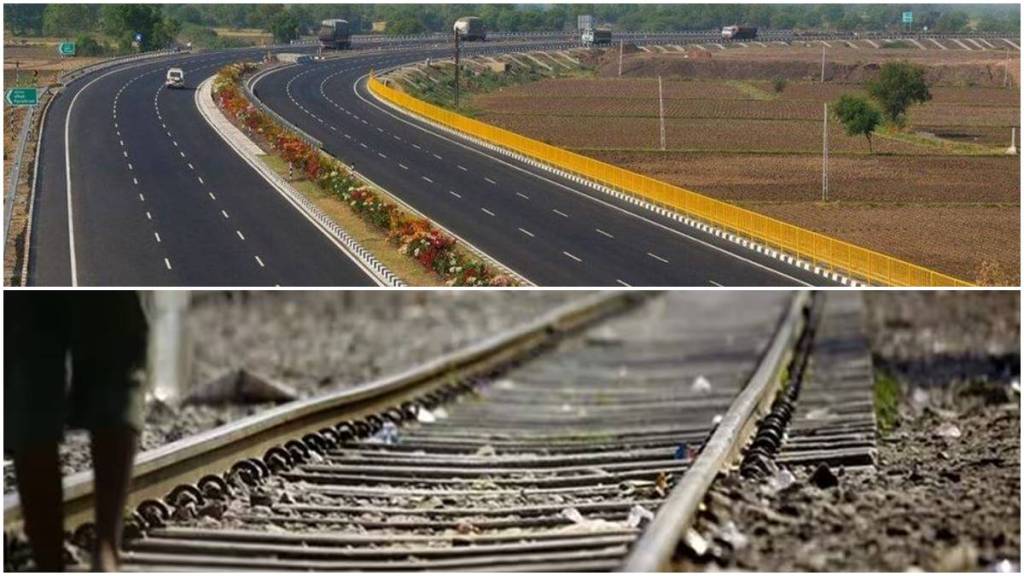The National Highway Authority of India (NHAI) has consistently demonstrated faster execution speed in building highways compared to the Dedicated Freight Corridor Corporation of India Ltd (DFCCIL) in constructing railway lines. Several factors contribute to this discrepancy. Firstly, the acquisition of land for railway projects often involves complex procedures and bureaucratic hurdles, leading to delays. On the other hand, NHAI can acquire land more swiftly for highways.
Secondly, the hierarchical structure and decision-making process within NHAI may be more streamlined and efficient than that of DFCCIL. Additionally, highway projects typically involve simpler engineering requirements and face fewer technical challenges than constructing dedicated freight corridors, which require more intricate planning and execution. These factors collectively result in NHAI’s ability to expedite highway construction, outpacing the speed of railway line execution by DFCCIL.
The speed of execution of highway projects in India is undeniably faster compared to that of railway lines. Here are the reasons that shed light on this discrepancy:
Lesser bureaucratic hurdles
Highway projects typically involve fewer bureaucratic complexities and approvals compared to railway projects. The decision-making process for highways is often streamlined, enabling faster progress.
Land acquisition challenges
Railway projects often face significant delays due to the complexities of acquiring land, which involves negotiations with multiple stakeholders, including landowners and local communities. In contrast, highway projects may encounter fewer land acquisition challenges, allowing for quicker implementation.
Technological differences
The construction and maintenance of highways may require less sophisticated technology and engineering expertise than railway lines. This simplicity contributes to a faster execution timeline for highway projects.
Funding and financial considerations
The availability of funds and financial resources can influence the pace of project execution. Highway projects may have more accessible funding sources, leading to quicker implementation.
Geographic factors
Railway lines often traverse diverse terrains, including mountains, forests, and water bodies, which can significantly complicate the construction process. Highways, on the other hand, may be easier to plan and construct through flatter and more accessible landscapes.
Public interest and support
Highway projects may receive stronger public support and political will, leading to expedited approvals and a smoother execution process.
Operational considerations
Railway projects need to account for various safety and operational requirements, which can add complexity and time to the planning and execution phases.
Scale and scope
Highway projects are generally smaller in scale and scope compared to major railway infrastructure developments, making them inherently quicker to implement.
Once a railway line is operational, it offers an environmentally friendly transport corridor that significantly reduces greenhouse gas emissions, often by at least 85% when compared to highways. Additionally, railways enable higher speeds than what is typically achievable on highways. Railways provide a disciplined way of transportation as the train’s route is not under the control of the crew but is determined by centralised control with an overall view of traffic. This centralised control allows for efficient movement prioritisation, ensuring smoother and more organised operations.
Following are few more concern areas which affects the overall delays of Railway line construction:
- Highway construction mainly focuses on civil engineering aspects, while the construction of a railway line involves additional complexities such as installing signaling systems and overhead electrical catenaries.
- When constructing a highway along an existing road alignment, traffic can continue to use the road while improvements are made simultaneously. In contrast, railway construction often requires traffic suspension on the existing line for various purposes, especially during doubling projects.
- Roads permit steeper gradients compared to railways, where 1/200 is the maximum limit. This results in reduced earthwork requirements during highway construction.
- Roadways allow for sharper curves compared to railways, providing more flexibility in alignment planning.
- Mid-course changes in highway alignment to avoid obstacles are relatively easier compared to railways, where detours in the middle of construction can be complex and challenging.
- Railway stations need to be constructed approximately every 7-8 kilometers, and integrating them with existing stations and yards can be a significant undertaking.
- Lane changes in roadways are achieved through driver steering, while railways require “cross-overs” with associated signaling and overhead electrical infrastructure for lane switching.
- Highways do not require the construction of substations for drawing electricity for traction, which is essential for railway operations.
- Railway-road crossings necessitate infrastructure and interlocking with signaling systems to ensure safe passage.
- Railway projects involve setting up en-route freight terminals, connecting with industrial sidings, and establishing internal operational and safety sidings.
All these above factors contribute to the contrasting speed of execution between highway and railway construction projects in India.
Both railway and highway systems have their distinct advantages and disadvantages. While railways offer significant environmental benefits, higher speeds and increased productivity in certain scenarios, highways offer flexibility, easier alignment changes and faster execution during construction.


